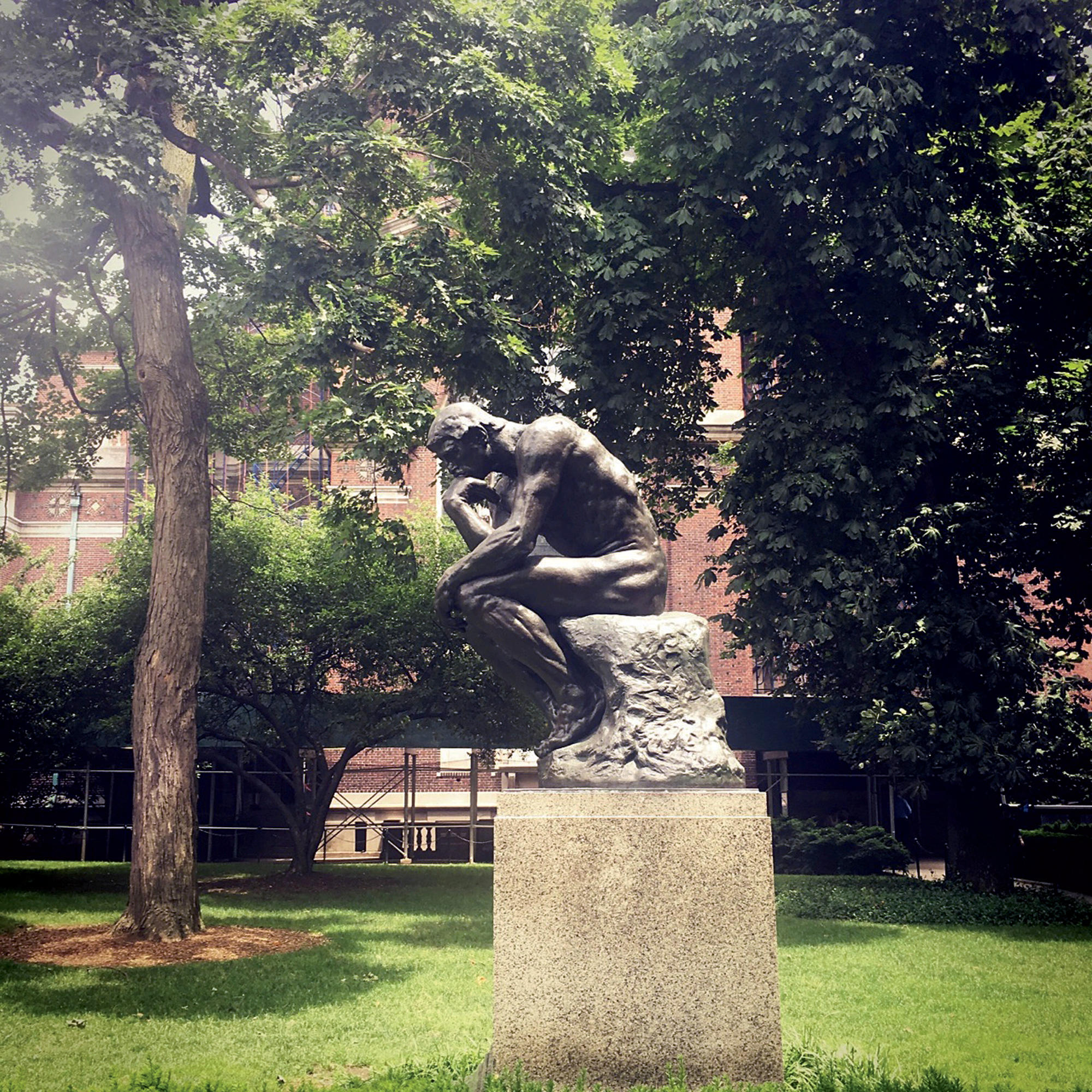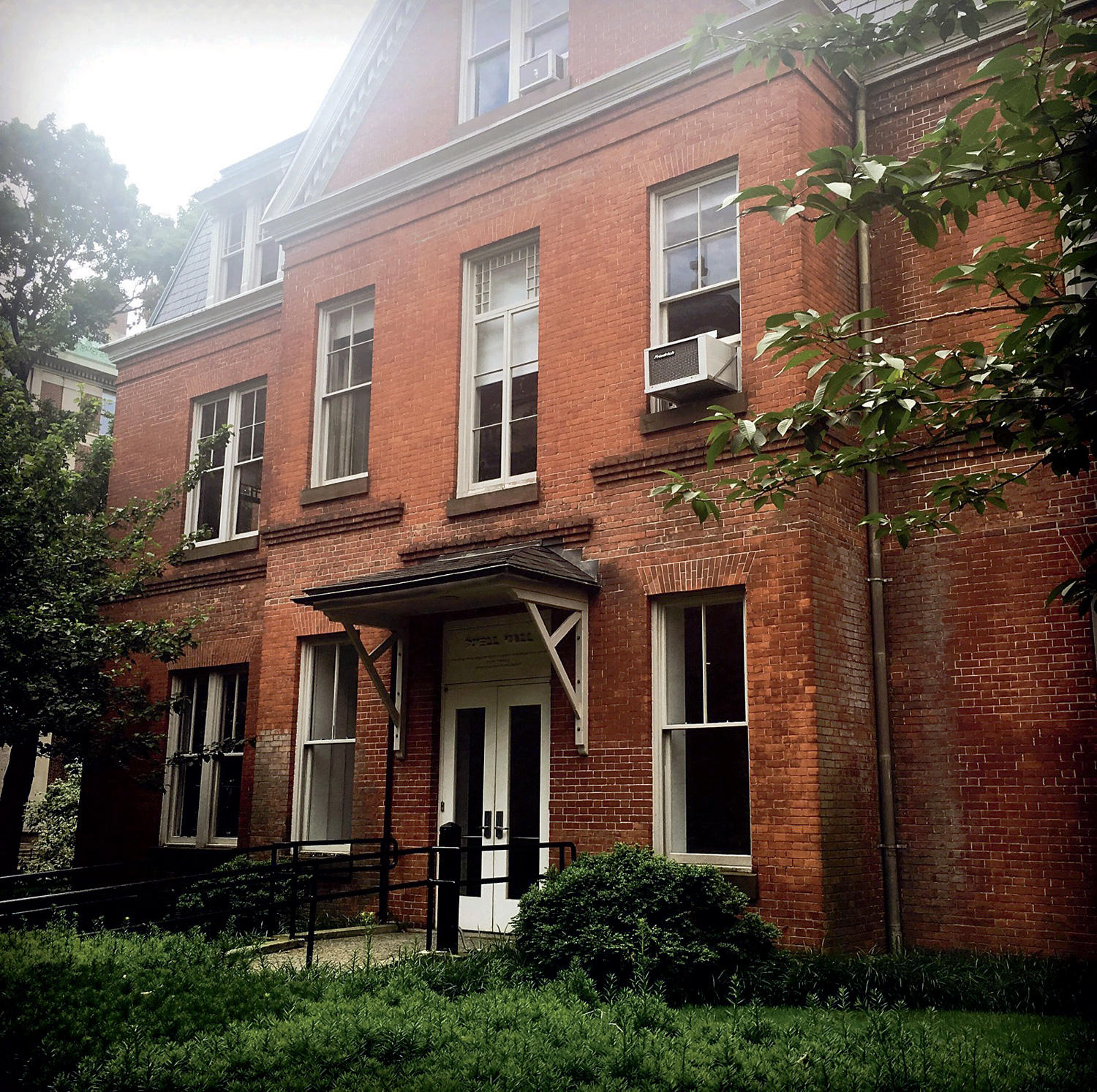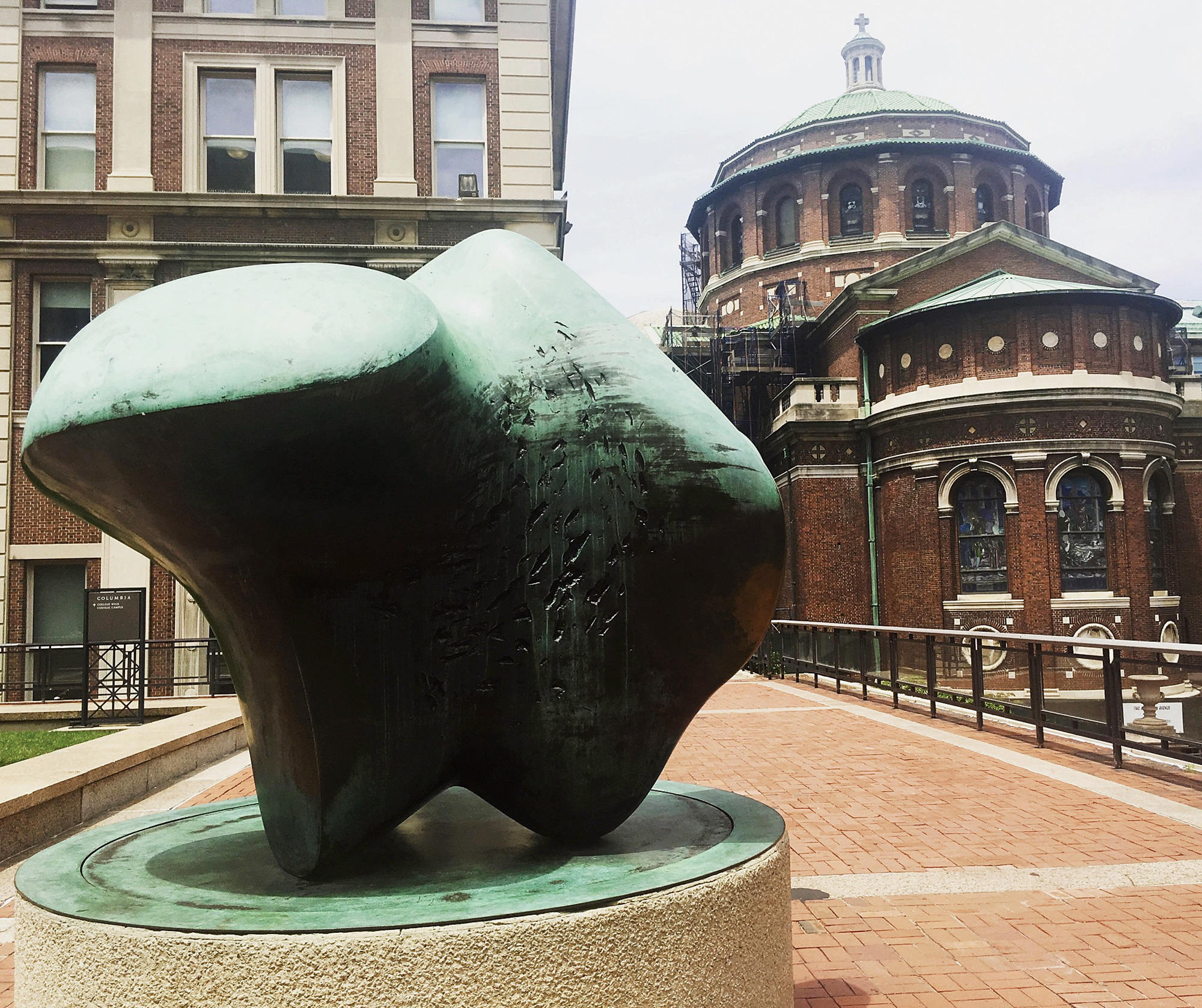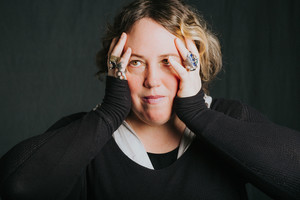The starting point was Low Library, which, as the tour group learned, hasn’t been a library since 1934. But as the campus’s first building and original library, it was the perfect base for Columbia’s free biweekly historical tour, held every Monday and Wednesday year-round. On a recent afternoon, twenty-two people congregated in the Low visitors’ center, ready for a forty-five-minute walkabout.
Guides Alexandria Parkhurst and Daniel Kvoras, both juniors, led their group through the front doors, past the Ionic columns, and halfway down the steps to Alma Mater. The bronze statue was designed in 1901 by Daniel Chester French, a sculptor famous for his statue of Lincoln in the Lincoln Memorial and less known for his love of owls. “He even hid an owl within the Alma Mater sculpture,” Parkhurst said, and gamely recited the Columbia legend that the first member of an undergraduate class to spot it will graduate as valedictorian. Prospective students in the group might have welcomed the opportunity to linger for a few moments of bird watching, but the tour was moving along briskly.
Next, the guides stopped by Kent Hall, home to the Starr East Asian Library, which was modeled after the Wren Library at Trinity College, Cambridge; then Philosophy Hall, with its 1930 replica of The Thinker (a gift of Columbia president Nicholas Murray Butler, who ordered the cast from Rodin’s favorite Paris foundry); then Buell Hall, the oldest building on campus and the last remnant of Bloomingdale Insane Asylum, which stood on Morningside Heights until 1889.
The group walked east to Revson Plaza, a bridge over Amsterdam Avenue known for its modern art and selfie-worthy Manhattan views. “It’s slowly becoming a sculpture garden,” said Parkhurst, who introduced Jacques Lipchitz’s Bellerophon Taming Pegasus, a gift to the law school that was not, Parkhurst emphasized, installed upside down. (But where does the winged horse end and the human begin?) Then came Henry Moore’s Three-Way Piece No. 1: Points, nicknamed “the tooth” due to its shape. “If you get four or five adults, you can spin it,” Parkhurst said. “We call it ‘turning the tooth.’” (The dental school was not available for comment.)
Also on the itinerary: Schermerhorn Hall, where Franz Boas founded the nation’s first anthropology department; Saint Paul’s Chapel, where Paul Simon and Art Garfunkel ’65CC recorded parts of “The Boxer” in 1969; and the school of engineering, which once possessed a giant steam locomotive that was kept in the mathematics building basement.
The tour ended at Butler Library, which houses the bulk of Columbia’s stacks (two million books) and a collection of antique furnishings that require constant upkeep. As the tour group passed the Wien Reading Room, a guest pointed out a broken chandelier above the help desk, seemingly about to fall. “I’ll bring that up with the Butler personnel,” responded Kvoras at a library-appropriate volume, before leading the group down the marble stairs, past a portrait of former Columbia president Dwight D. Eisenhower, and out the side door.





